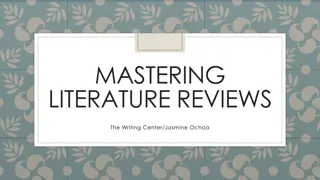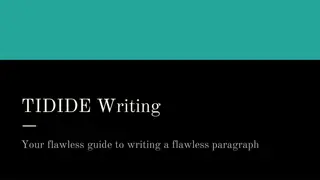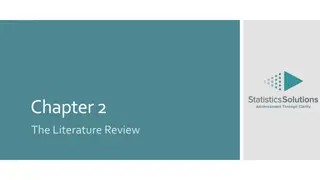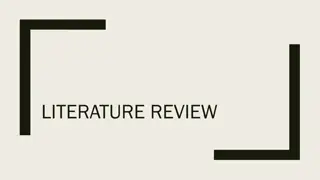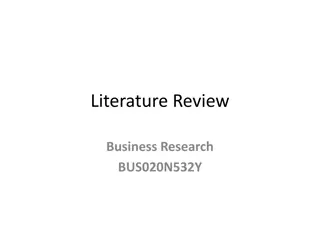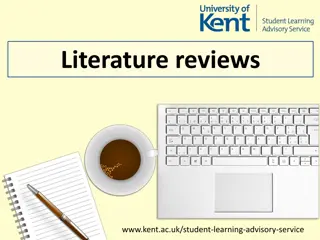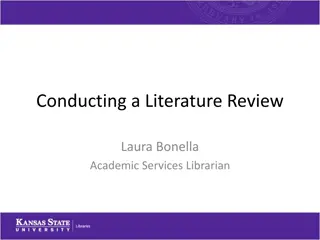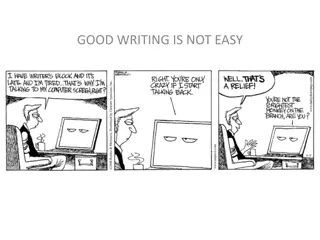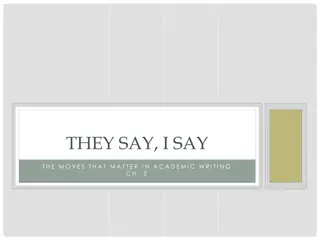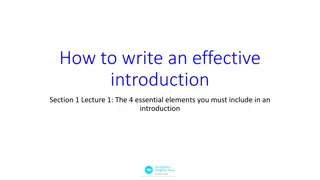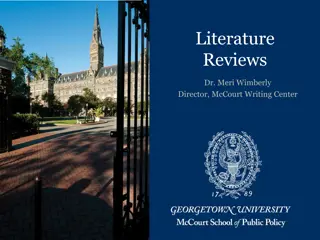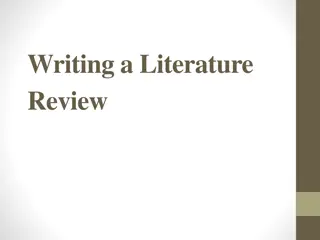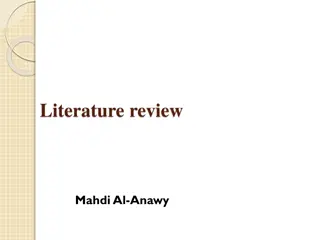Mastering the Art of Writing an Effective Literature Review
Understand the key differences between an academic paper and a literature review, explore the purposes of a literature review, and learn about the essential structure and steps involved in crafting a successful review.
Download Presentation

Please find below an Image/Link to download the presentation.
The content on the website is provided AS IS for your information and personal use only. It may not be sold, licensed, or shared on other websites without obtaining consent from the author.If you encounter any issues during the download, it is possible that the publisher has removed the file from their server.
You are allowed to download the files provided on this website for personal or commercial use, subject to the condition that they are used lawfully. All files are the property of their respective owners.
The content on the website is provided AS IS for your information and personal use only. It may not be sold, licensed, or shared on other websites without obtaining consent from the author.
E N D
Presentation Transcript
Writing a Literature Review Basics Liberally adapted from the University of Guelph, UNC, and other sources.
Academic Paper or Lit Review? The primary focus of an academic research paper is to develop a new argument. Research papers often do contain literature reviews, in a research paper the literature serves as a foundation and as support for any new insights you contribute. The focus of a literature review, however, is to summarize and synthesize the arguments and ideas of others without adding new contributions.
Purposes of a Lit Review It gives readers access to research on a particular topic by selecting quality articles or studies that are relevant, meaningful, and valid and summarizing them into one complete report It provides an excellent starting point for researchers in a new area by forcing them to summarize, evaluate, and compare original research in that specific area It ensures that researchers do not duplicate work that has already been done It can provide clues as to where future research is heading or recommend areas on which to focus It highlights key findings It identifies inconsistencies, gaps and contradictions in the literature It provides a constructive analysis of the methodologies and approaches of other researchers
Structure of a review Introduction - The introduction explains the focus and establishes the importance of the subject. It discusses what kind of work has been done on the topic and identifies any controversies within the field or any recent research which has raised questions about earlier assumptions. It may provide background or history. It concludes with a purpose or thesis statement. in a review that is an introduction or preparatory to a thesis or research report, it will suggest how the review findings will lead to the research the writer proposes to undertake. Body - Often divided by headings/subheadings, the body summarizes and evaluates the current state of knowledge in the field. It notes major themes or topics, the most important trends, and any findings about which researchers agree or disagree. If the review is preliminary to your own thesis or research project, its purpose is to make an argument that will justify your proposed research. Therefore, it will discuss only that research which leads directly to your own project. Conclusion - The conclusion summarizes all the evidence presented and shows its significance. If the review is an introduction to your own research, it highlights gaps and indicates how previous research leads to your own research project and chosen methodology
Steps Pick a working topic: consult with your advisor, other faculty, and review older works done in your department. This doesn t need to be your final topic but should be in the field of interest. Choose the literature you will review: Select databases and other lit sources (see the Subject Guide for your discipline) and start identifying subject headings/ descriptors/ that are appropriate. Start identifying classic studies, theories, and theorists. Analyze: Read broadly to start and identify assumptions, methodologies, testing procedures, and research findings. Note often-cited authors, major works, conflicting theories and contested results. Watch for how theories evolve (or not) over time.
Steps, continued. Organize - group your selected articles by identified patterns and themes: common findings, major trends in the research, which theories emerge as most influential. Develop your thesis - write a concise statement summarizing your conclusions about major trends and developments. Organize your paper Develop headings and subheadings. The sections of your paper should link and progress thematically / topically, not by focusing on the work of individual researchers. Write and review Focus on analysis: compare and evaluate the literature rather than list developments chronologically. Analysis and synthesis are the crucial elements.
Additional sources https://www.lib.uoguelph.ca/get-assistance/writing/specific-types- papers/writing-literature-review https://writingcenter.unc.edu/tips-and-tools/literature-reviews/ http://www.duluth.umn.edu/~hrallis/guides/researching/litreview.ht ml
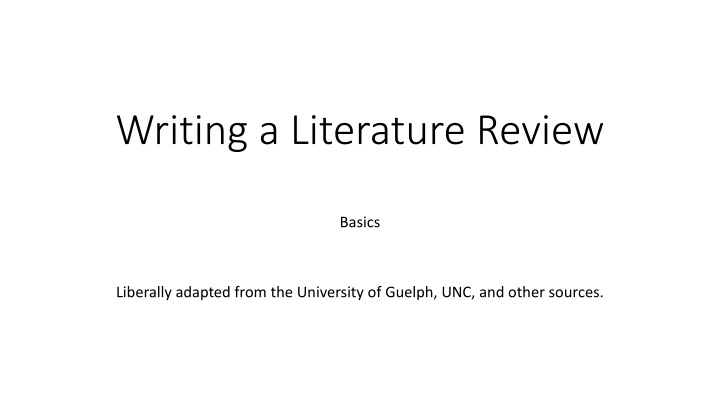

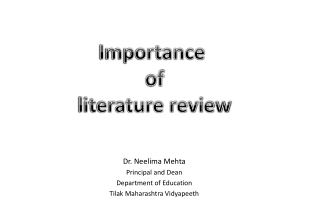
![[PDF⚡READ❤ONLINE] In Ruins: A Journey Through History, Art, and Literature](/thumb/20543/pdf-read-online-in-ruins-a-journey-through-history-art-and-literature.jpg)

